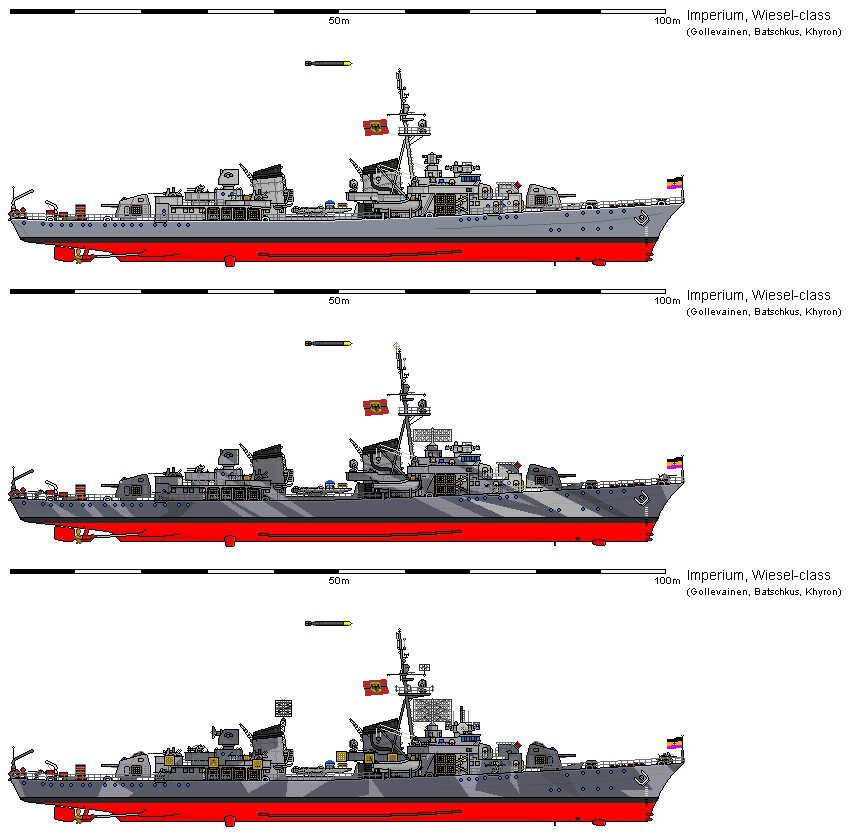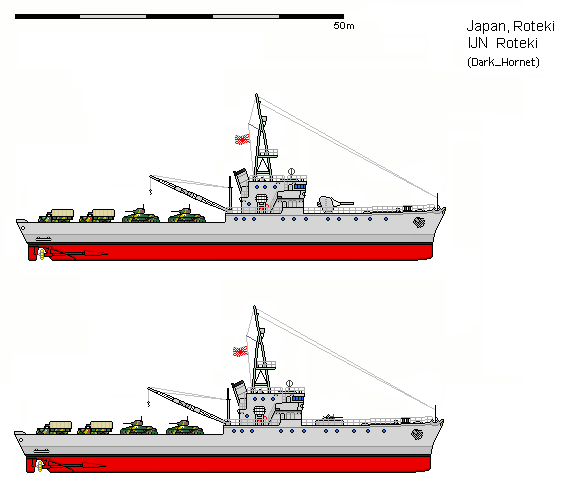HOME | DD
 Khyron2000 — Small Destroyer - Wiesel - Revised
Khyron2000 — Small Destroyer - Wiesel - Revised

#destroyer #imperium #wiesel #shipbucket
Published: 2021-02-07 19:43:50 +0000 UTC; Views: 7058; Favourites: 33; Downloads: 27
Redirect to original
Description
With the threat of a new, great war was looming on the horizon, the Imperium slowly abandoned adhering to treaty boundaries, suspecting (sometimes correctly) that other powers are doing the same thing.
With a new, much higher budget than before, the navy adopted a high-low strategy for building destroyers and other small vessels, with the new Wiesel-class being the new „low“-end vessel.
Designed to be mass-produced, yet capable, Wiesels are smaller than the equally-new, much larger Walküre-class and about half-as-capable as these.
A flush-decker with Diesel-engines, the Wiesel-class can reach top speeds of 34 knots, really at the lower end of destroyer speeds, but fast enough for most pusposes.
Armed with two of the new 128mm L/45 dual-purpose turrets, as well as six 50mm and several 20mm weapons, these smaller destroyers are quite capable of defending themselves against air-attack and are among the smallest vessels to incorporate a unified air-defense command system.
They also feature a quad launcher for standard 533mm torpedoes, but these are more for defense against larger vessels, the Wiesel's attack capabilities are rather limited.
However, they pack a formidable anti-submarine punch for a fleet destroyer. Being equipped with active and passive sonar systems, they also mount depth-charge rails, projectors and the new Stachelschwein (Pocupine) system.
This is a large launcher, holding twelve 120mm breech-loaded mortars, modified from army weapons. These can fire a salvo of diving grenades, making it a good choice for engaging submarines once they vanish from the surface but are not too deep down yet.
Originally fitted without radar, the class was provided with space and weight-reserves and were fitted with advanced sensors once they became available.
Overall, the Imperium built some 64 of these ships, but lost almost half of them during the later stages of the war, mainly to massed air-attacks.
























